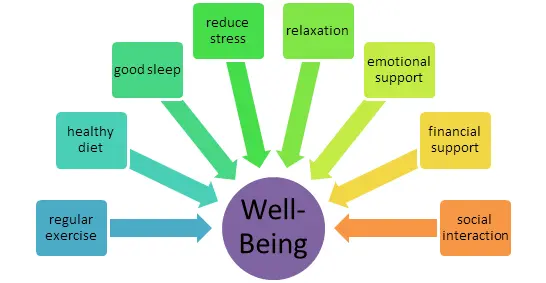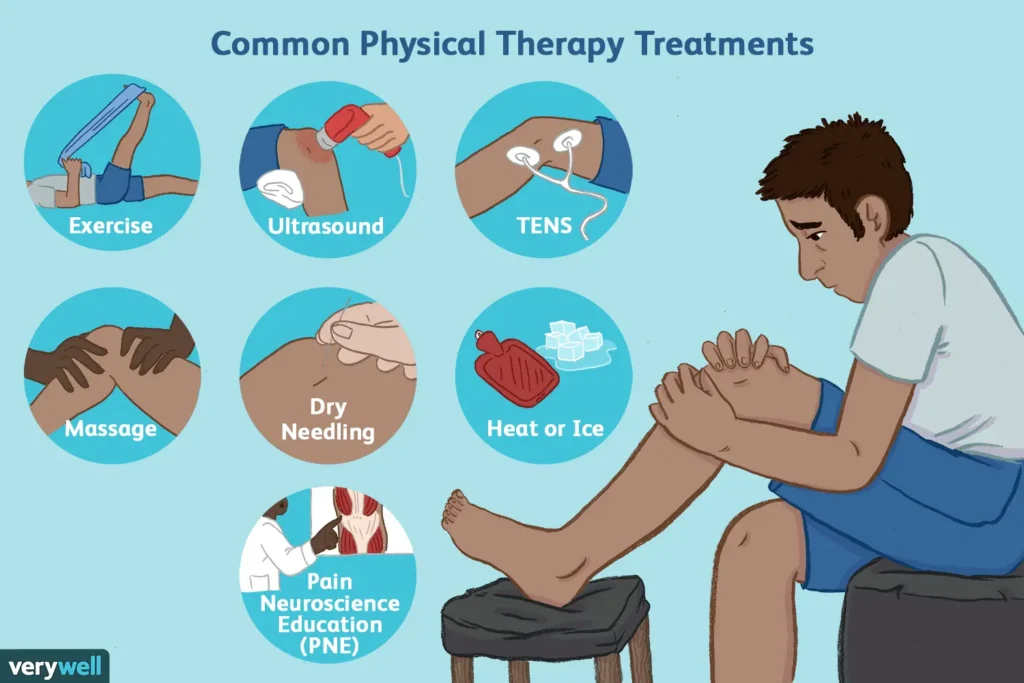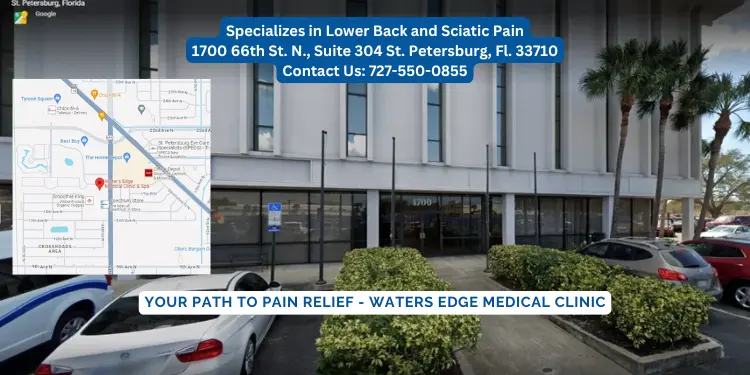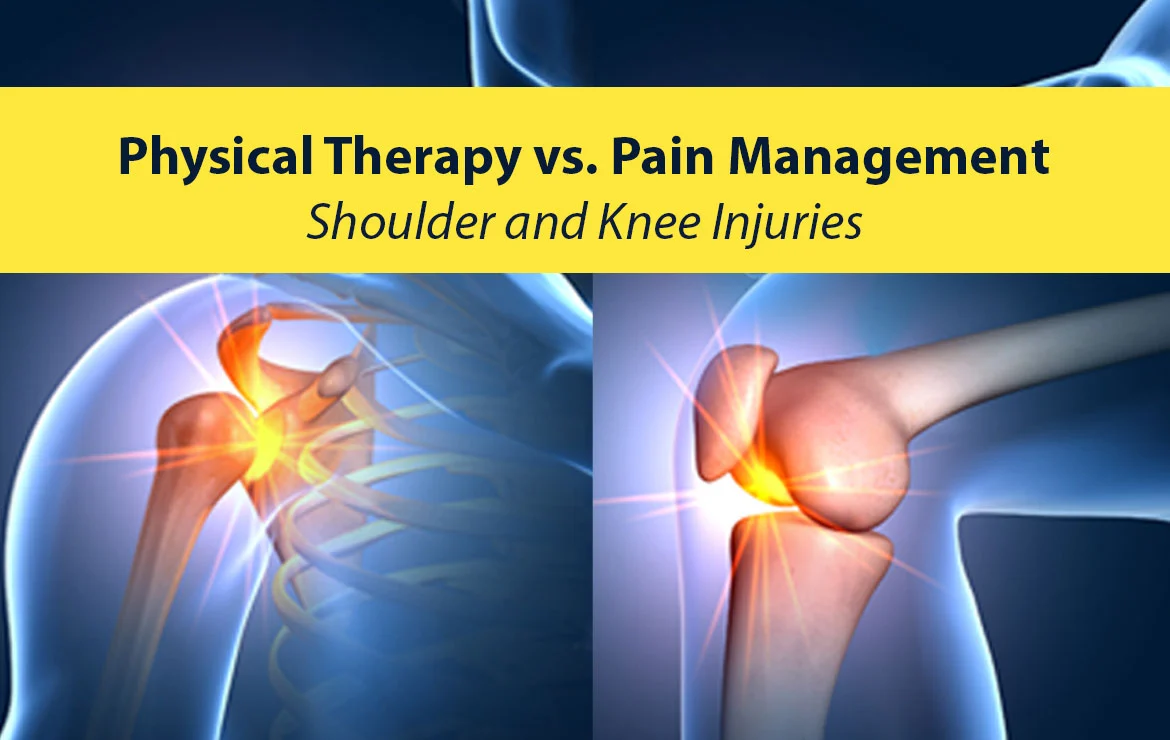Navigating the complex landscape of pain management vs. physical therapy can be daunting, yet crucial in determining the most effective treatment for your well-being. As you face this crossroads, understanding the nuances of each path is vital to making a well-informed choice that supports your health and recovery.
Pain management offers relief by targeting symptoms, while physical therapy aims to strengthen affected areas through tailored exercises and techniques. Each approach holds its unique benefits and considerations, influencing the trajectory of your recovery journey.
In this insightful article, we delve into the intricacies of choosing between pain management and physical therapy, equipping you with the knowledge to navigate this decision-making process confidently. Whether you seek immediate relief or long-term rehabilitation, understanding the differences between these paths will empower you to embark on the right course towards a pain-free and active lifestyle.
Understanding Pain Management
A comprehensive approach, pain management utilizes various strategies to relieve discomfort and enhance daily living for individuals facing chronic or acute pain. This field combines medical, psychological, and physical interventions to target pain at its source and mitigate its effects on daily activities.

The complexity of pain, which can arise from various conditions such as injury, surgery, or chronic illnesses, necessitates a multifaceted approach to treatment. Understanding the mechanisms behind pain, such as its physical, emotional, and psychological aspects, is essential for effective management.
Pain management techniques range from pharmacological treatments, such as over-the-counter and prescription medications, to interventional procedures like nerve blocks and injections. Additionally, complementary therapies, including acupuncture and massage, can play a significant role in managing pain.
At Waters Edge Medical clinic our services are considered natural pain medicine and regenerative medicine. We focus on regenerative medicine healing the affected area and eliminating pain. This is done through regenerative medicine treatments including platelet-rich plasma therapy (PRP) and stem cell therapy. These methods help the body naturally heal and regenerate, thus fixing and healing the problem.
Every pain management approach is customized to the individual, considering the pain’s type, severity, root cause, and overall health. By customizing treatment plans, this approach ensures patients get the best possible care for their unique condition.
Moreover, pain management is not solely focused on the physical symptoms. It also addresses the emotional and psychological impacts of chronic pain, which can include anxiety, depression, and social withdrawal. Incorporating mental health support into treatment plans enables healthcare providers to help patients manage the emotional challenges of chronic pain.
This holistic approach ensures that individuals not only find relief from their physical symptoms but also regain a sense of control and improve their overall well-being.
The Impact of Physical Therapy on Pain Relief and Recovery
Physical therapy is essential for pain management, using targeted exercises and therapeutic techniques to restore function and aid rehabilitation. Unlike pain management, which may prioritize symptom relief, physical therapy aims to identify and treat the underlying causes of pain. Individuals healing from injuries, surgeries, or chronic conditions affecting movement and functionality greatly benefit from this proactive method.
Physical therapists use techniques like manual therapy, targeted exercises, and patient education to restore strength, improve flexibility, and reduce pain.
Movement is integral to physical therapy, as it supports healing, restores functionality, and alleviates discomfort. Through guided exercises, physical therapists help patients improve their range of motion, strength, and coordination. This can be especially important for individuals with musculoskeletal issues, as enhancing physical function often leads to reduced pain levels.

Additionally, therapists educate patients on proper body mechanics and posture, empowering them to make lifestyle changes that prevent future injuries and alleviate pain. This educational component is crucial, as it equips individuals with the tools they need to manage their conditions independently.
Furthermore, physical therapy can incorporate modalities such as heat, cold, ultrasound, and electrical stimulation to enhance the healing process and reduce pain. These techniques can promote blood flow, decrease muscle tension, and stimulate the body’s natural healing mechanisms. By combining these modalities with exercise and education, physical therapy provides a comprehensive approach to pain management that fosters long-term recovery and improves the patient’s overall quality of life.
Key Differences Between Pain Management and Physical Therapy
While pain management and physical therapy share the common goal of alleviating discomfort, they differ significantly in their approaches and methodologies. Pain management primarily focuses on reducing symptoms through various interventions, including medications and invasive procedures.
Immediate relief is a primary goal, enabling individuals to get back to their daily routines free from pain. This approach is particularly beneficial in acute pain scenarios, where timely treatment accelerates healing.
Natural pain management and regenerative medicine that is performed at Waters Edge Medical clinic in contrast focuses on not only alleviating the pain, but finding the root cause and regenerating affected tissues.
In contrast, physical therapy focuses on strengthening the affected area. Rather than merely masking symptoms, physical therapy seeks to address problems through rehabilitation and functional improvement. Patients engage in structured exercise programs tailored to their specific needs, promoting strength, flexibility, and endurance.
This proactive approach not only reduces pain but also empowers individuals to take charge of their recovery, building independence and resilience in managing their health.
Another critical difference lies in the duration and scope of treatment. Pain management may involve short-term interventions that can provide quick relief, unless regenerative medicine is utilized which would cause natural healing to occur. This treatment although performed quickly continues to regenerate and heal the affected tissue over time. Physical therapy on the other hand, typically requires a longer commitment, often spanning weeks or months.
This extended engagement allows for gradual improvement and the development of coping strategies that patients can use for ongoing self-management. Knowing these distinctions is essential for individuals deciding on their treatment plan, as it empowers them to pick the option that best matches their health goals and personal context.
Benefits of Pain Management Techniques
Pain management techniques offer numerous benefits, particularly for individuals dealing with chronic or acute pain. One of the most significant advantages is the immediate relief these techniques can provide. Pharmacological interventions, such as analgesics and anti-inflammatory medications, can effectively reduce pain levels, allowing individuals to engage in daily activities with greater ease.
For those suffering from severe discomfort, interventional procedures like nerve blocks or epidural injections can provide rapid and significant relief, facilitating a more comfortable experience during recovery.
Additionally, pain management techniques often involve a multidisciplinary approach that combines various methods tailored to an individual’s specific needs. This approach may involve a blend of medication, physical therapy, mental health support, and complementary therapies.
By addressing pain from multiple angles, patients are more likely to experience comprehensive relief and improve their overall quality of life. This holistic strategy acknowledges that pain is not just a physical experience but also has emotional and psychological components that need to be addressed.
Additionally, effective pain management can improve mental well-being. Chronic pain often triggers frustration, anxiety, and depression, which can intensify the pain experience. By employing strategies that relieve pain, individuals may experience improved mood and a reduction in the emotional burden that accompanies persistent pain. This positive feedback loop can encourage individuals to engage more actively in their rehabilitation process, leading to better outcomes and a more fulfilling life.
Benefits of Physical Therapy in Rehabilitation
Physical therapy offers a wealth of benefits, particularly for individuals undergoing rehabilitation following injury or surgery. One of the primary advantages is its focus on restoring function and mobility. Through personalized exercise programs, physical therapists help patients regain strength, flexibility, and coordination, which are essential for returning to daily activities.
This approach to rehabilitation not only eases pain but also motivates individuals to engage in their own recovery, cultivating independence and a sense of success.
Moreover, physical therapy promotes long-term health benefits that extend beyond immediate rehabilitation. By educating patients about proper body mechanics, posture, and movement patterns, physical therapists equip individuals with the knowledge to prevent future injuries. This preventive approach is especially beneficial for athletes, those with physically demanding careers, or anyone seeking to stay active and healthy. By instilling healthy habits and movement strategies, physical therapy can significantly reduce the risk of re-injury and chronic pain.
In addition to physical benefits, therapy also addresses the psychological aspects of recovery. Engaging in a structured rehabilitation program can enhance motivation, improve mood, and foster a sense of community among patients. Physical therapists offer continuous encouragement and support during recovery, assisting individuals in overcoming obstacles and setbacks along the way. By providing emotional support, individuals can build resilience and confidence, leading to a more successful and empowering rehabilitation experience.
Factors to Consider When Choosing Between Pain Management and Physical Therapy
When faced with the decision between pain management and physical therapy, several factors should be considered to ensure the best possible outcome. One of the first considerations is the nature and severity of the pain. Acute pain, such as that resulting from an injury or surgery, may benefit from immediate pain management techniques to provide rapid relief.
In contrast, chronic pain conditions often require a more comprehensive approach that addresses underlying issues, making physical therapy a more suitable option.
Another critical factor is the underlying cause of the pain. If the pain is associated with a specific injury or movement dysfunction, physical therapy may be the most effective treatment option. With expertise in musculoskeletal conditions, physical therapists utilize precise exercises and rehabilitation approaches to treat the underlying causes of pain and discomfort.
Conversely, if the pain is a result of a condition that requires ongoing management, such as arthritis or fibromyalgia, pain management strategies may be more appropriate to control symptoms and improve quality of life.
Additionally, personal preferences and lifestyle considerations should also be taken into account. Many people choose a proactive approach to pain management, turning to physical therapy to restore their movement and improve overall function. Others may seek immediate symptom relief through medications or interventions.
Understanding one’s own goals, preferences, and lifestyle can significantly impact the effectiveness of the chosen treatment path. Ultimately, making an informed decision involves weighing these factors and considering how they align with individual health goals and needs.
Integrative Approaches for Holistic Pain Management
Integrative approaches to pain management emphasize the importance of treating the whole person rather than just the symptoms. This holistic perspective combines conventional medical treatments with complementary therapies, allowing individuals to address various aspects of pain and health.
For example, integrating pain management techniques, such as medication and interventional procedures, with physical therapy, acupuncture, or mindfulness practices can enhance overall effectiveness and promote long-term recovery.
One of the key benefits of integrative approaches is their ability to address the emotional and psychological dimensions of pain. Dealing with chronic pain can strain mental health, triggering anxiety, depression, and a sense of helplessness in many individuals.
By incorporating psychological support, such as cognitive-behavioral therapy or relaxation techniques, patients can develop coping strategies that empower them to manage their pain more effectively. This comprehensive approach acknowledges the interplay between physical and emotional health, leading to more successful outcomes.
Furthermore, integrative approaches often encourage lifestyle modifications that promote overall wellness. This may include dietary changes, exercise programs, and stress management techniques that can enhance the body’s natural healing processes. By fostering a sense of empowerment and control over one’s health, individuals are more likely to engage actively in their treatment, leading to improved outcomes and a better quality of life.
Overall, integrative approaches provide a holistic framework for pain management that addresses the multifaceted nature of pain and recovery.
Success Stories: Real-Life Examples of Pain Management and Physical Therapy Effectiveness
Success stories from real-life experiences offer a powerful perspective on the effectiveness of pain management techniques and physical therapy, showcasing how individuals have navigated their unique challenges to achieve relief and improved functionality. Consider the example of a middle-aged runner who injured their knee during a marathon, illustrating the challenges many face with sports-related injuries.
Initially, she sought pain management interventions, including corticosteroid injections, which provided temporary relief. However, to achieve long-term recovery and return to her active lifestyle, she turned to physical therapy. Through a customized rehabilitation program focused on strengthening the muscles around her knee and improving her running mechanics, she was able to return to running pain-free within months.
Another powerful example is that of a young woman diagnosed with chronic lower back pain caused by a herniated disc. Initially, she relied on pain medications to manage her symptoms, but the side effects began to impact her daily life. After consulting with a physical therapist, she embarked on a tailored exercise program that included core strengthening and flexibility training.
Over time, she not only reduced her reliance on medications but also significantly improved her overall physical function. This journey highlights the transformative power of physical therapy in addressing the root causes of pain and promoting long-lasting recovery.
Lastly, an older gentleman with arthritis in his hips experienced debilitating pain that hindered his ability to walk and enjoy social activities. His doctor recommended a combination of pain management techniques and physical therapy. By combining medication for pain relief with a tailored physical therapy program focused on low-impact exercises, he was able to restore mobility and significantly improve his quality of life.
His story illustrates how an integrative approach can lead to successful outcomes, enabling individuals to reclaim their independence and engage in activities they love.
Finding the Right Specialist for Your Pain Management or Physical Therapy Needs
Choosing the right specialist for pain management or physical therapy is a crucial step in ensuring effective treatment and recovery. When seeking a pain management specialist, it is essential to look for a healthcare provider with experience in managing your specific condition. This may include board-certified pain management physicians, anesthesiologists, or neurologists who have a deep understanding of pain mechanisms and various treatment options. It’s also beneficial to inquire about their approach to pain management, ensuring they offer a comprehensive and personalized strategy that aligns with your needs.
When considering physical therapy, finding a licensed physical therapist with expertise in your particular area of concern is vital. Look for professionals who have experience treating similar conditions or injuries and who utilize evidence-based practices.
Additionally, consider the therapist’s approach to treatment—whether they prioritize a hands-on approach, exercise-based rehabilitation, or a combination of both. Having a strong connection and open lines of communication with your therapist can significantly improve the outcome of your treatment, allowing for smoother adjustments and discussions throughout recovery.
Finally, consider the location and accessibility of the specialist’s practice. Convenience can play a significant role in maintaining consistency with treatment, especially for individuals who may require frequent visits. Explore various options, including local clinics, rehabilitation centers, or multidisciplinary pain management facilities, to find the right fit. By taking the time to research and select the appropriate specialist, individuals can set themselves up for success in their journey toward pain relief and improved physical function.
Conclusion: How to Make an Informed Decision About Your Health
Navigating the decision between pain management and physical therapy requires careful consideration of individual needs, preferences, and health goals. Understanding the distinct approaches and benefits of each path can empower individuals to make informed choices that align with their unique circumstances. Whether seeking immediate relief through pain management techniques or pursuing a long-term rehabilitation strategy through physical therapy, it is essential to prioritize personal well-being and quality of life.
Incorporating a holistic perspective that acknowledges the interconnectedness of physical, emotional, and psychological health can enhance the effectiveness of chosen treatments. By maintaining open communication with healthcare providers, considering integrative approaches, and seeking guidance from specialists, you can further enhance your recovery experience.
Ultimately, embracing a proactive and well-informed mindset allows individuals to effectively manage pain and physical therapy, ultimately leading to a life with less pain and more fulfillment.
If you have any additional questions or if you would like to see if natural pain management and regenerative medicine is right for you, please contact us at Waters Edge Medical Clinic at 727-550-0855.


